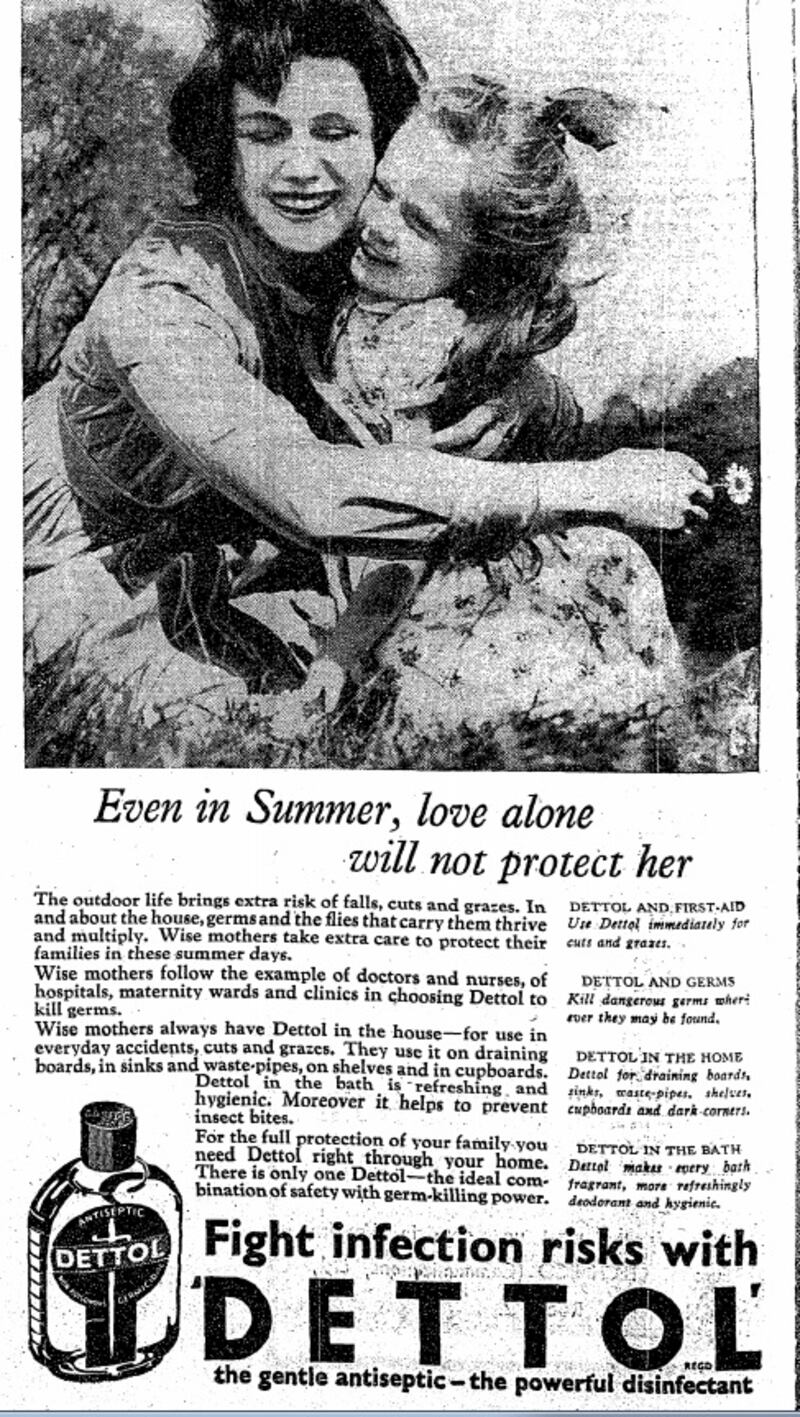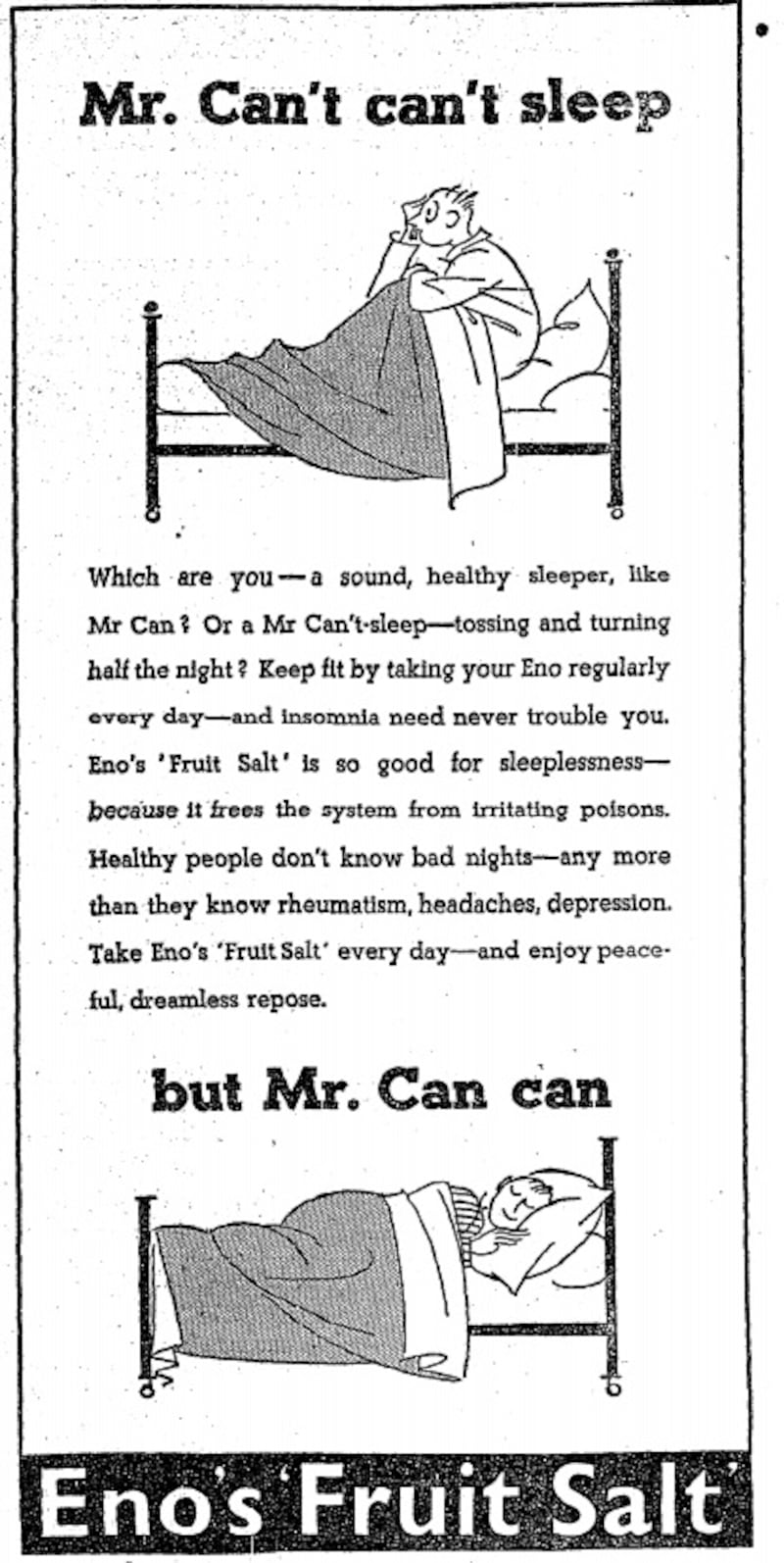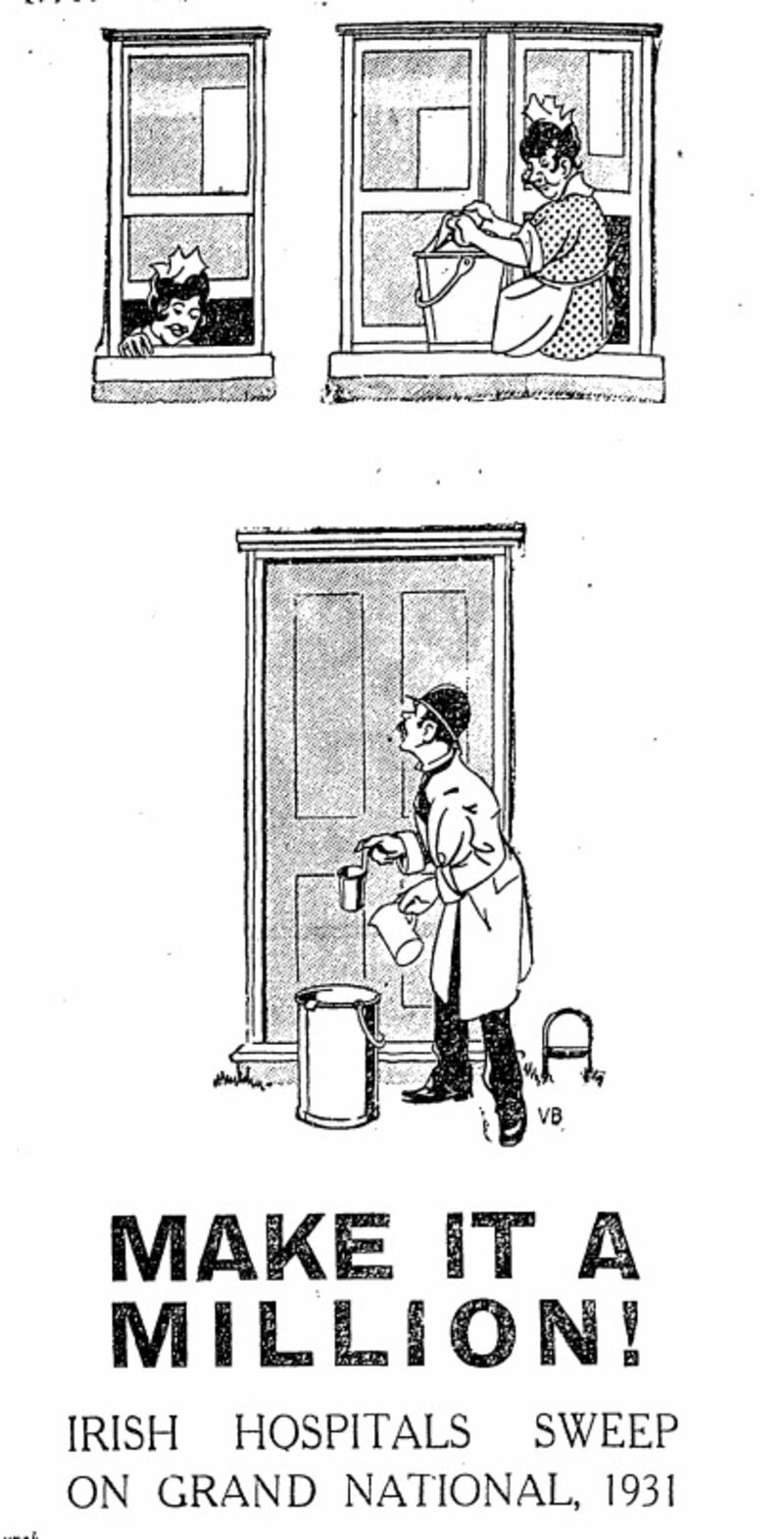One diverting aspect of researching medical stories in this journal’s archives is perusing its advertisements.
They offer a fascinating insight into how the nation’s health concerns have always been targeted by commercial interests; in addition to revealing how outlandish unsubstantiated claims could be, before the introduction of advertising standards for medicinal and health-related products.
Often it was difficult to distinguish advertisement from editorial, as only a throwaway mention of a proprietary remedy would indicate that this was in fact a paid promotion, not a verified account of a remarkable cure.
One could dedicate an entire newspaper to the dubious endorsements for ‘Dr Williams’ Pink Pills for Pale People’. Between the late 1800s and the 1950s its target readers included: ‘weak wives and mothers’, rheumatic men, farmers with influenza, anaemic girls, female war workers, veterans, the underweight, menopausal women, and overworked newspapermen.

It claimed many cures, including to conditions like bile, eczema, fits, ‘decline’, gout, heartburn, kidney disease, rickets, scrofula, sciatica, St Vitus’ Dance, paralysis, consumption, Women’s Disorders, and Locomotor Ataxy (often associated with syphilitic infection).
Other stalwart advertisers were: Clarkes World Famed Blood Mixture; Carters Little Liver Pills; and Dr Cassell’s tablets which were: ‘the recognised modern home remedy for Nervous Breakdown, Nerve Paralysis, Spinal Weakness, Infantile Paralysis, Nervous Debility, Sleeplessness, Anaemia, Kidney Trouble, Indigestion, Stomach Disorder, Malnutrition, Wasting Disease, Palpitation, Premature Decay, Loss of Flesh, Brain fag. Specially valuable for nursing mothers and during the critical periods of life . . .’
And while many 19th century advertisements were hidden in the editorial columns, others enticed with illustrations.
Notices for Homocea ointment depicted how ‘it touches the spot’ , promising an end to boils, burns, cuts, bruises, piles, rheumatism, and many other ailments. And in 1890, long before Andrews Laxative salts guaranteed ‘inner cleanliness’, a sketch of a reclining woman was used to promote: ‘Refreshing. Appetising. Effervescing Salt Regal.’ which was said to prevent and instantly relieve ‘Headache, Flatulence, Dyspepsia, Indigestion &c’
Most commercial promotions, however, featured in the medical classifieds, alongside ads for doctors, surgeons, and dentists.
Some invited readers to write away for booklets and purported cures, such as: The Truth About Marriage; ‘Oscar Fanyau’s Treatise on Epilepsy and all Nervous Diseases; or Magic Mirror, A Positive Cure for Debility, Weakness, Loss of Health & Manly Vigour, Certain Blood and Skin Diseases, Discharges, Pimples, Sore Throats, Painful Swellings.
Hop Bitters
Archived advertising columns also provide an insight into accepted medical treatments, or remedies of the day. If you had had asthma in the 1860s or 1870s, puffing on a Cigares de Joy was recommended to give relief for “all spasmodic affections of the respiratory organs”. In 1917, sufferers could have written away for a free trial of Potters Asthma Cure. Both contained the hallucinogenic stramonium.
A course of Hop Bitters was another approach the Victorian invalid might have been encouraged to take, even those suffering from kidney disease, diabetes, paralysis, bowel complaints, nervous afflictions and irritability. The alleged immediate effects of taking Hop Bitters included: “The Dull Eye Becomes Bright. The Dry and Furred Tongue Becomes Moist and Clean. The Foul Breath Becomes Sweet. The Torpid Liver Becomes Active. The Clouded Brain Becomes Clear”.
Or perhaps one might have enjoyed Grey's Children's Worm Cake ... a purely vegetable sweetmeat or Johnson's Gingerbread Worm Nuts – "for effectually eradicating intestinal worms in children and adults"' – prepared and sold on Grafton Street in 1862.
In addition to neuralgia, bronchitis, sciatica, gout and laryngitis, Thermogene Curative Wadding was suggested for another affliction of the 1920s, Tram Neck: "A cold draught catches the side of the neck for a few moments, and the next day the result is a stiff neck – a complaint which does not keep the patient in bed, but causes untold pain and inconvenience during the day. Nothing is more trying to the temper than a stiff neck." Applying the wadding to a stiff neck at night was said to "bring immediate relief".
Many other products are also no longer familiar: Brandeths sugar-coated pills – “a safe Cathartic for the weakest as well as active enough for the strongest”; Bynogen – for “all enfeebled conditions”; Sloan’s Liniment – “Kills Pain”; or Nostroline – “Do not let Nasal Catarrh poison your system and undermine your health’.
Other brands, however, remain household names. In 1869, long before an association with cold remedies, Beecham pills were sold for: “bilious and nervous disorders, such as wind and pain at the stomach, sick headache, giddiness, fullness after meals, dizziness and drowsiness, cold chills, flushings of heat, loss of appetite, shortness of breath, costiveness, scurvy and blotches on the skin, disturbed sleep, frightful dreams, nervous and trembling sensations, &c. The first dose will give relief in 20 minutes. This is no fiction, for they have done it to thousands”.
Vick Vapour-Rub became a modern remedy in the 1920s, with free samples offered to “every mother in Dublin”. Readers were informed that: “Everybody is talking about the new remedy that checks colds without internal medicine”, which “Attacks Cold-Germs 2 Ways at Once”.
Gripe Water
Other staples of the household medicine cabinet soon included aspirin, soluble Disprin, and Dettol to “fight infection risks”.
Another domestic remedy for many generations was Woodwards Gripe Water, for relieving wind pain – which copywriters in 1943 promised: “‘Makes Baby Happy and Mother too!”.
“They Go To Sleep For Hours” announced an earlier 1926 ad, which was not surprising considering the original recipe contained alcohol, in addition to dill oil, sodium bicarbonate, sugar, and water.
Other ads were for those worried about alcohol consumption. Antidipso, which advertised between 1902 and 1904 claimed to be “‘a cure for drunkeness”: “Can be given in Tea, Coffee, or Food, thus absolutely and secretly curing the Patient in a short time without his knowledge”. (An analysis in the Lancet showed that the product was actually 78 per cent milk sugar and 22 per cent potassium bromide. Bromide had the potential to cause nausea, but not in the quantities contained in a daily dose of Antidipso.)
Aimed at “‘the devoted wife, sister, or daughter”, promotions declared: “It is now within the reach of Every Woman to Save the Drunkard”.
In a bid to make women choose their products, advertisers constantly used guilt, but by the 1950s they were slathering it on. Bovril asked young wives: “Does your husband catch cold?”; while Sanatogen enquired: “Are You the woman your husband married? Are you just as good company, just as good-natured as you were then?”
Ads for cod liver oil preparations, Virol, and hosts of other products, appealed to the maternal instinct to protect children from ill health, and avoid school absences. Readers were advised: “wise mothers’ bring Milk of Magnesia for summer stomach upsets”, and “always have Dettol in the house”. One ad for junior aspirin was even less subtle: “Take the pain AWAY Mummy. The more you love him the, the quicker you’ll turn to Angiers!”.
Some of the most plentiful, and creative, promotions were for skin and foot complaints, including Dr Scholls, and various foot baths. You could solve both with Zam- Buk, which was sold to be used on “acne, eczema, pimples, chafing, burns, scalds, and sore tired feet”.

Suggested remedies for digestive issues were also prolific in every decade: Wrights Coal Tar Pills, Eno’s Fruit Salts, Tri=Silikol, Maclean Stomach Powder, and Rennies. Once again mothers were regularly targeted, with the message that laxatives were essential for their children’s wellbeing – “‘Every Child Needs A Spring Clean”; “Mother. . .is he Dull? Or Bright!”
Poisonous waste
There were even pledges that they would solve adolescent moods and menstrual woes.
One 1940 advertisement declared: What Doctors Advise for Growing Up Girls. "Many mothers do not realise that their daughters' so-called 'natural' pains, sick headaches and listlessness are not natural at all. Science now finds that much of the trouble is simply the result of poisonous waste in the system. What doctors advise mothers to do at this period is to help nature get rid of these poisons in a safe, gentle and harmless way. Simply give your daughter the natural laxative known as California Syrup of Figs . . . what it does for you daughter will amaze you . . .New cheerfulness will replace nervous, crying spells. Headaches and other painful symptoms vanish. It's a wonderful thing to watch, as thousands of mothers can tell you."
Current events, and topical health concerns – flu, polio, consumption – were all used to push products. During wars testimonials from soldiers were employed to promote a range of wares, and as the Great War continued in February 1918, it was Venos Cough Syrup which posted appeals to farmers to turn land over to tillage, and grow food.
Older readers, meanwhile, will recall regular health-related ads of a different kind, encouraging the purchase of tickets for the Irish Hospitals Sweepstake, the precursor to today’s National Lottery.
From 1930 the Sweepstake raised money for cash-strapped voluntary hospitals in Dublin with draws based on major horse races. Potentially winning tickets were drawn from rotating drums at thronged public ‘mixings’ – usually by nurses in uniform – and assigned to horses in the race.
Details of the prize fund and drawn tickets often filled the front page of the Weekly Irish Times and, in 1931, ticket sales for the November draw alone reached £2,941,852. A prize fund of £1,942,164 was allocated and hospitals received £735,463.

The operations of the Hospital Sweeps subsequently proved to be more than a little murky, but for decades it was a lucrative source of revenue for health services, including much needed foreign currency gleaned from illegal ticket sales abroad.
And then there were the ads where the lines between health aid and household product became blurred. In 1911 a columnist recommended Scrubb’s Ammonia as a rub for cold feet. An adjacent advertisement was obviously aimed at the more practical and frugal housekeeper. Not alone was it: “Refreshing as a Turkish Bath” and “Allays the Irritation caused by Mosquito Bites”, it also promised to remove stains and grease spots from clothing, restore colour to carpets, soften hard water, and clean plate and jewellery!


















